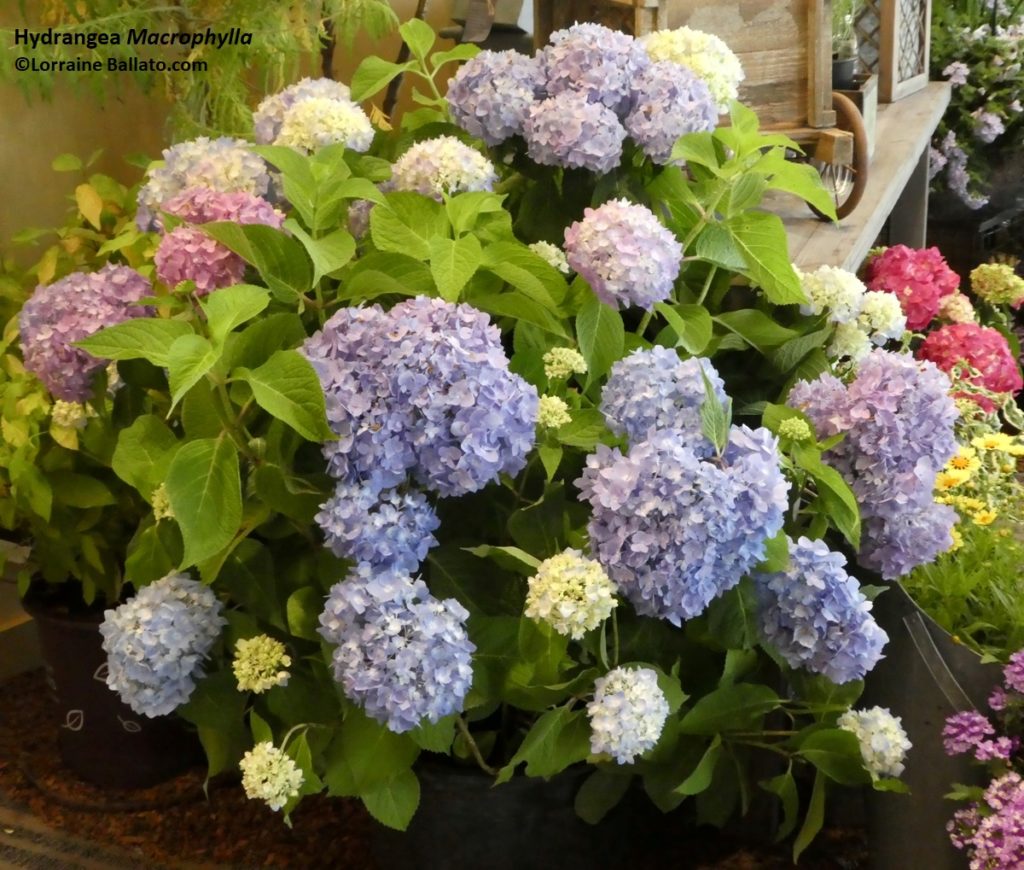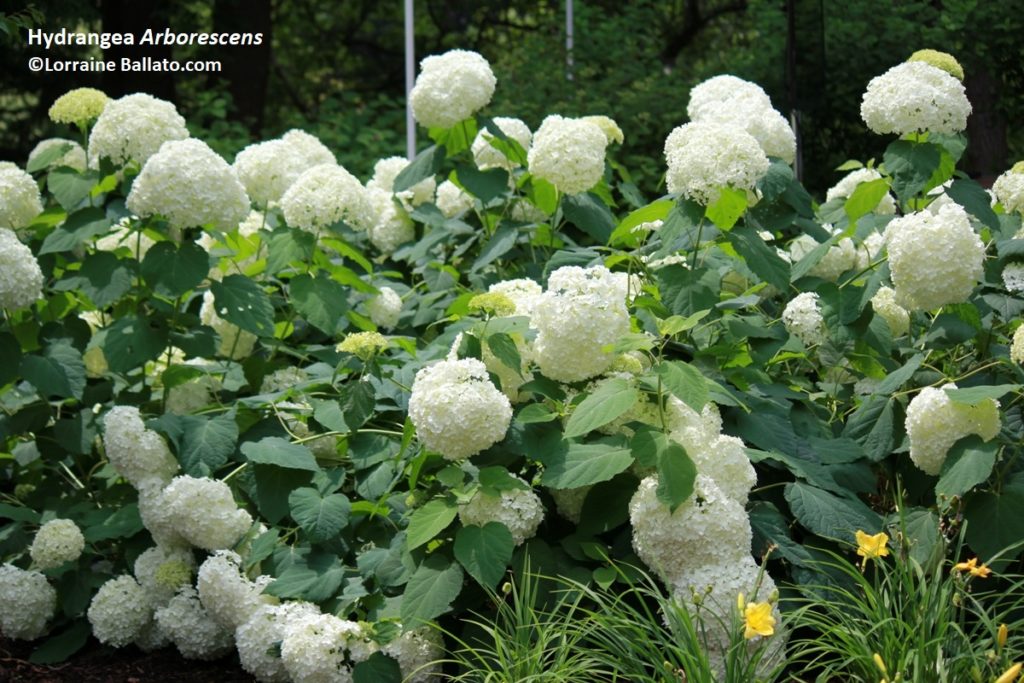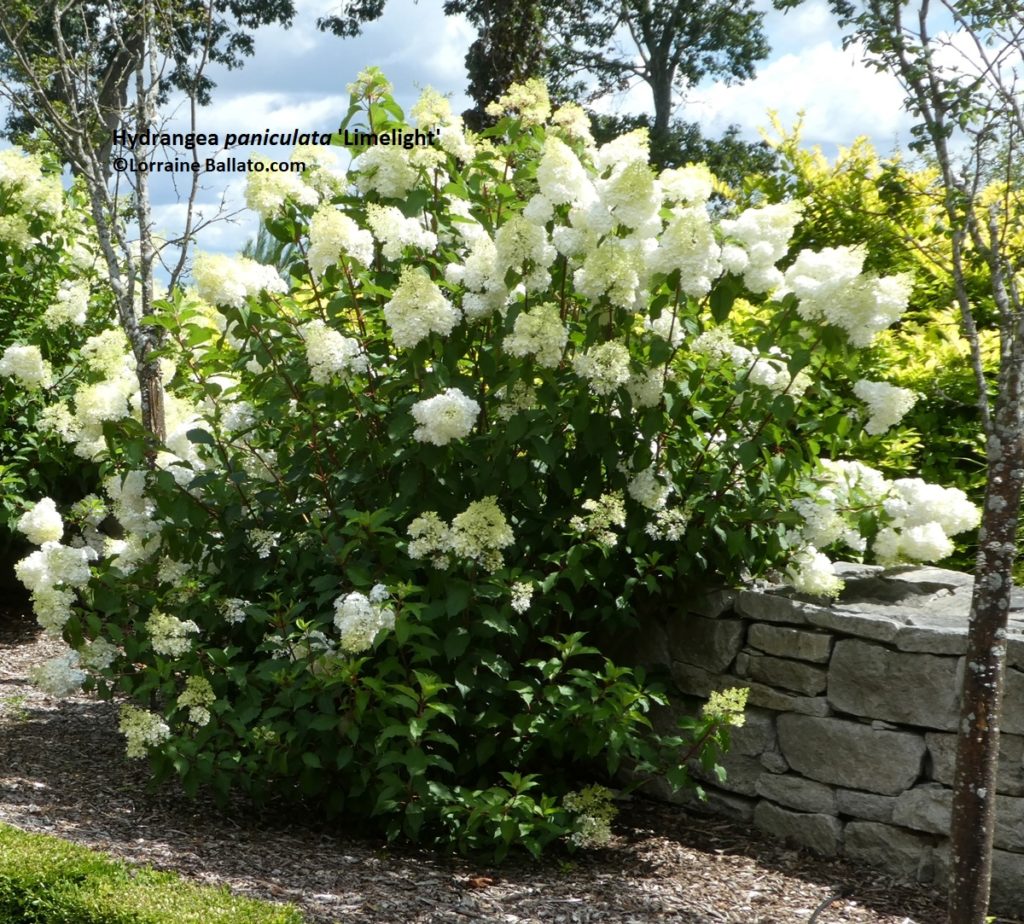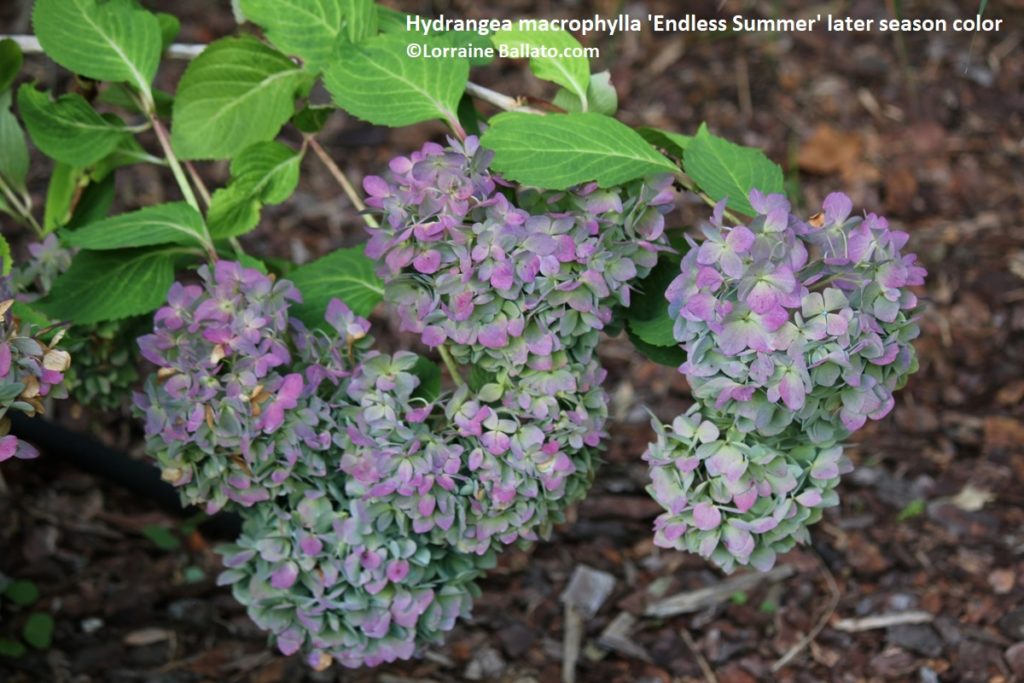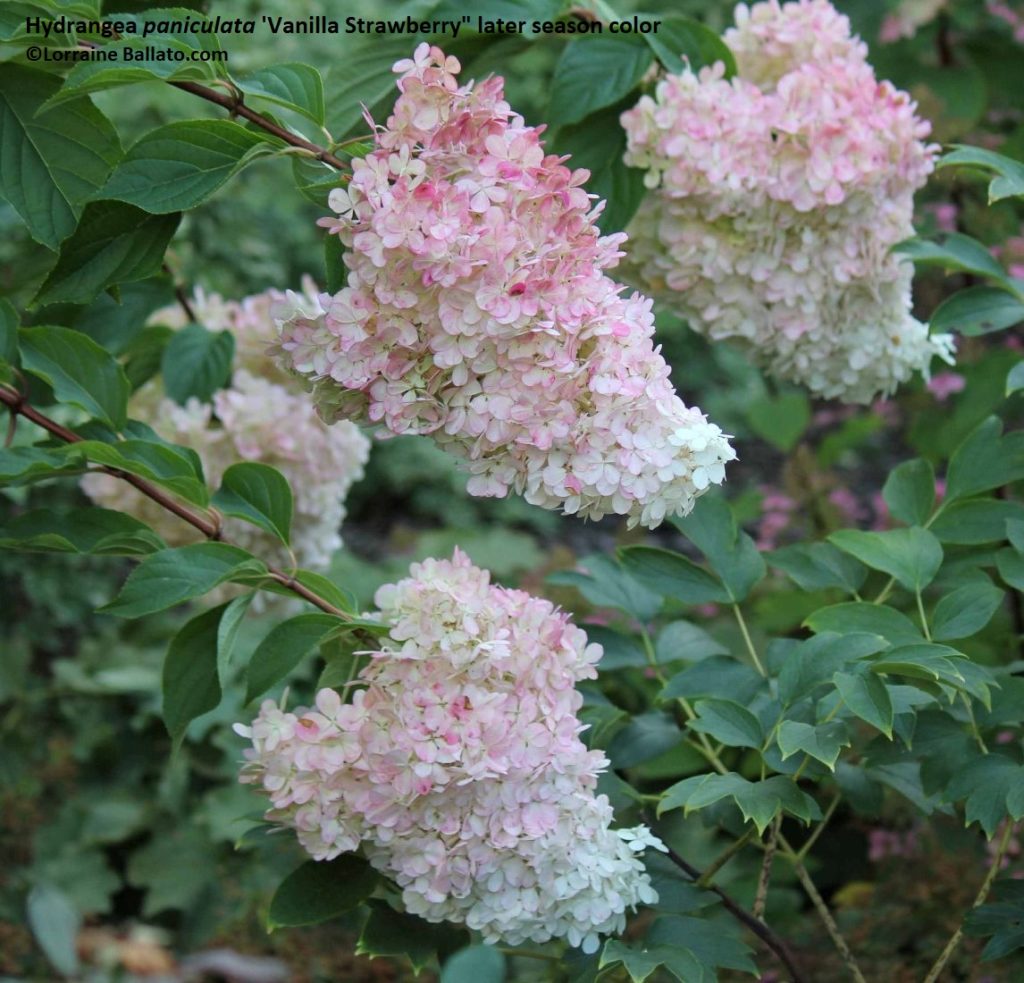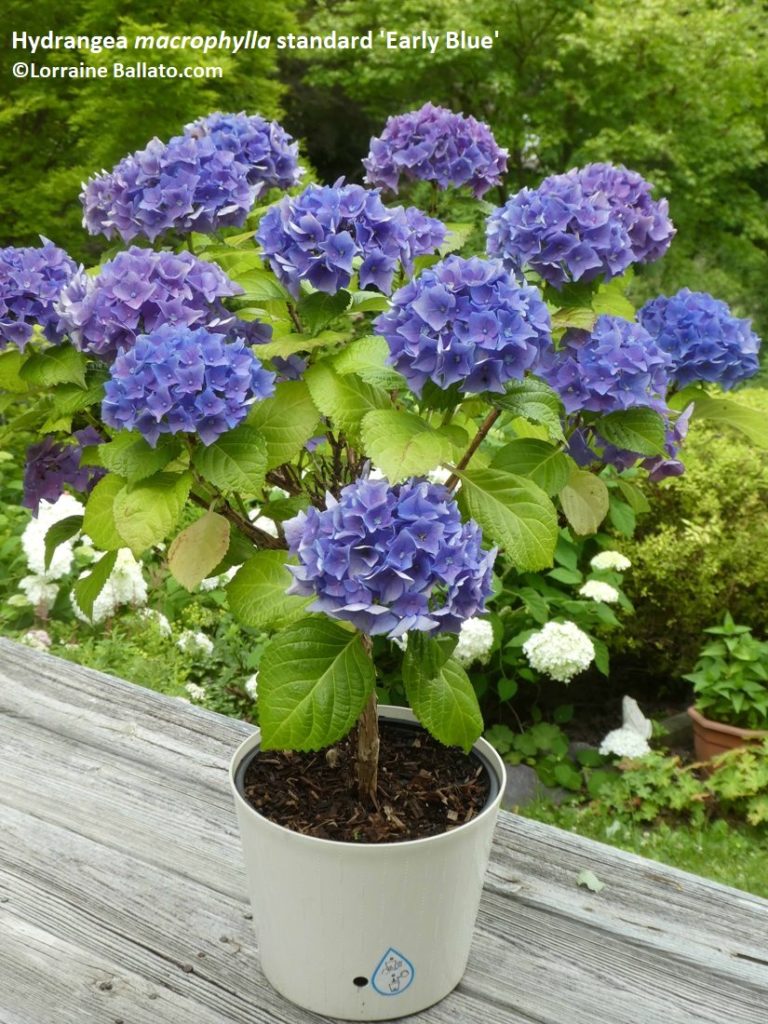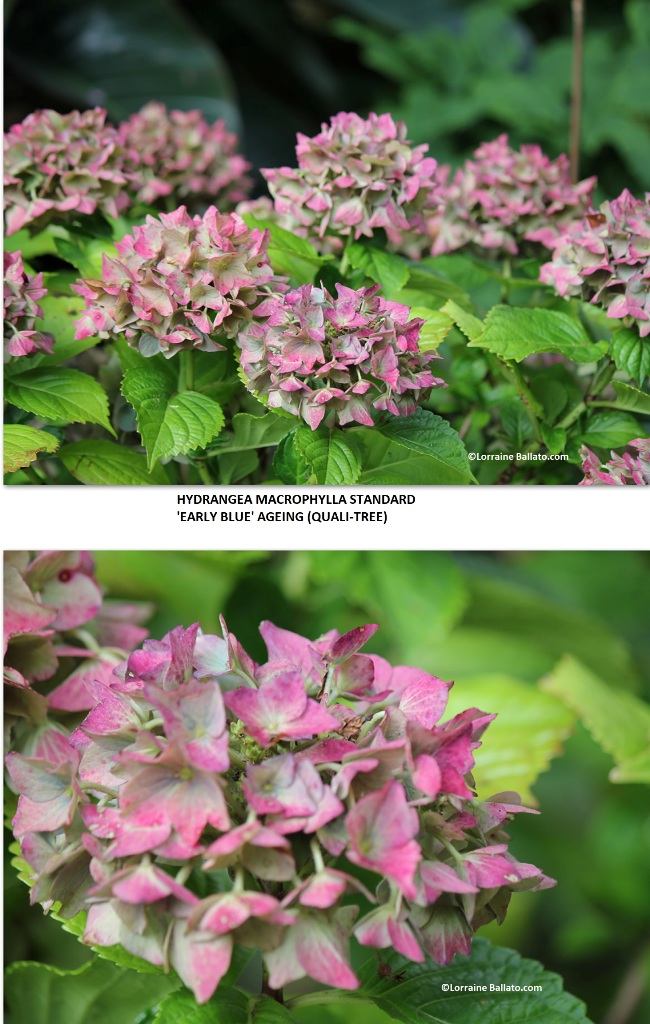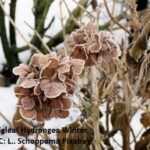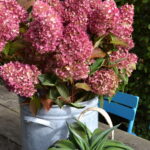One of the best features of hydrangeas is that they keep on giving with their late season color. Let me explain.
Hydrangea flowers through the season
Yes, you get flowers (in most years) from big leaf hydrangeas (macrophylla) in the June/July time frame
as well as dependable snowball-like flowers from woodland/smooth hydrangeas (arborescens).
Their beauty can take your breath away as they fill your garden with multiple shades of white, pink, and blue.
The colors from panicle hydrangeas
The big leaf hydrangeas put on a great show, only to compete with the panicle hydrangeas later on. Those conical flowers start their display with some flowers emerging a pale green while others come to the party dressed in white.
The mophead, lacecap, and conical hydrangea flowers provide needed pollen and nectar for the birds and bees while we get a great show.
The late season color of ageing hydrangea flowers
But the best part about these shrubs is that they hold their flowers as they morph into their stupendous later season color. No two or three week’s flash-in-the-pan here. They go through the heat of July and August and just get better. Colors on big leaf hydrangeas can develop into shades of mauve, green, powder blue, and lavender as seen here on an ‘Endless Summer’.
Then there are the panicle hydrangeas. They put on their later season colors as the temperatures start to moderate, some getting a deep raspberry while they still display white and pale pink florets on the same flower head. It’s a kaleidoscope of color that continues until frost knocks most of them down.
New trial plant in 2020
One of my trials this year was a big leaf hydrangea grown as a standard (sometimes called a lollipop, patio tree, or topiary). It comes in a decorative container complete with a water reservoir so your plant won’t dry out. This hydrangea standard is grown on its own root (not a graft) and has been developed and bred by Quali-tree out of British Columbia. I took home a flowerless ‘Early Blue’ in July 2019 from a trade show. It had finished flowering, and the grower had deadheaded and clipped it back.
‘Early Blue’ stayed outside until after it had achieved a proper chilling period (nights consistently below 60 F on short day length from late August through October). Then it was moved to my unheated attached garage. And there it sat through the winter, getting an occasional drink for the reservoir. Once daytime temperatures in spring warmed to above 50 F and nights stayed above freezing, I placed it outside. And then it happened: glorious deep blue, almost purple flowers for weeks on end emerged in June. What a show!
The best part is that now it has morphed into a rainbow of colors as the flowers aged.
I did nothing special to get this plant to provide later season color aside from the usual doses of fertilizer (a must for any containerized plant) and a reservoir refill every few days.
Your takeaway
The time you spend each season caring for your hydrangeas will pay you back for a full season of color, well into fall. Your hydrangeas can join in the symphony of later season garden color, along with grasses, monkshood, mums, etc.
What’s the takeaway for you? Take the time from now through September to note how your hydrangeas performed this season. Use the upcoming autumnal conditions to correct their siting and cultural conditions so you get the very best from them next year.
If you want to learn all the ins and out of growing great hydrangeas, get my international best selling reference book, Success With Hydrangeas, a Gardener’s Guide. You’ll find it handy and at the ready whenever you need to know what to do with your plants. Minimally, subscribe to this blog to get all the timely posts during the season.
6 Secrets for Stunning Hydrangea Flowers
Get my FREE mini-guide with 6 fool-proof tips showing how to grow hydrangeas that produce the most amazing flowers.
No spam - I promise!
